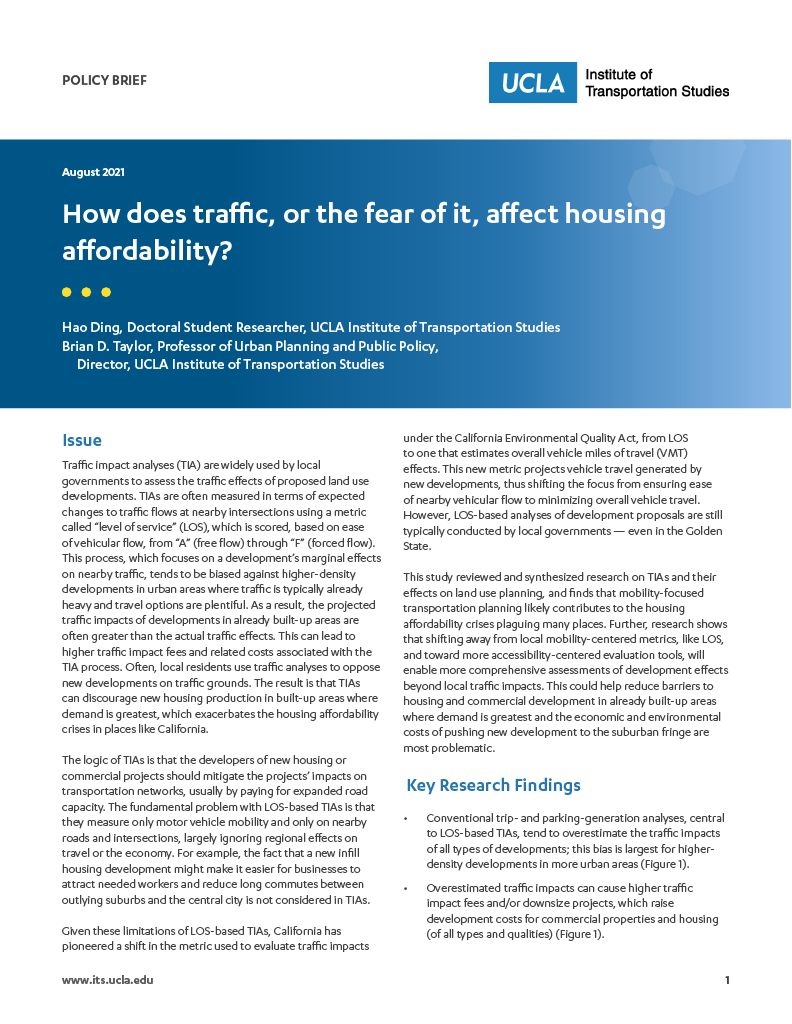Date: August 1, 2021
Author(s): Hao Ding, Brian D. Taylor
Abstract
Traffic impact analyses (TIA) are widely used by local governments to assess the traffic effects of proposed land use developments. TIAs are often measured in terms of expected changes to traffic flows at nearby intersections using a metric called “level of service” (LOS). This process, which focuses on a development’s marginal effects on nearby traffic, tends to be biased against higher-density developments in urban areas where traffic is typically already heavy and travel options are plentiful. Often, local residents use traffic analyses to oppose new developments on traffic grounds. The result is that TIAs can discourage new housing production in built-up areas where demand is greatest, which exacerbates the housing affordability crisis in places like California. The fundamental problem with LOS-based TIAs is that they measure only motor vehicle mobility and only on nearby roads and intersections, largely ignoring regional effects on travel or the economy. Given these limitations of LOS-based TIAs, California has pioneered a shift in the metric used to evaluate traffic impacts under the California Environmental Quality Act, from LOS to one that estimates overall vehicle miles of travel (VMT) effects. This study finds that mobility-focused transportation planning likely contributes to the housing affordability crisis plaguing many places. Further, research shows that shifting away from local mobility-centered metrics, like LOS, and toward more accessibility-centered evaluation tools, will enable more comprehensive assessments of development effects beyond local traffic impacts.
About the Project
For decades evaluation of the benefits and costs of new- or re- development in urban areas has centered on the effects of development on nearby traffic flows. Historically, and in most states outside of California, the level-of-service (LOS) scale has been used to approve or disapprove commercial developments. The logic of such an evaluation model is that smooth traffic flows are a primary goal of urban areas, which has the effect of discouraging the sorts of densely developed places that are more easily accessed by foot, bike, shared mobility, and public transit. To overcome the traffic flow focus of traffic impact analyses, the California legislature passed SB 743 in 2013, which mandated a change in the way that transportation impacts are analyzed under CEQA. New CEQA Guidelines were created to replace LOS with a new focus on how proposed developments affect vehicle miles of travel (VMT). This translational project will build on prior research, as well as the burgeoning literature on operationalizing access into transportation planning and engineering to develop and test some new analytical tools to evaluate the access impacts of developments.


